
Transit Briefs: NYMTA/Metro-North, MTC/VTA, Detroit People Mover, LA Metro, TriMet, MTS
Written by Carolina Worrell, Senior Editor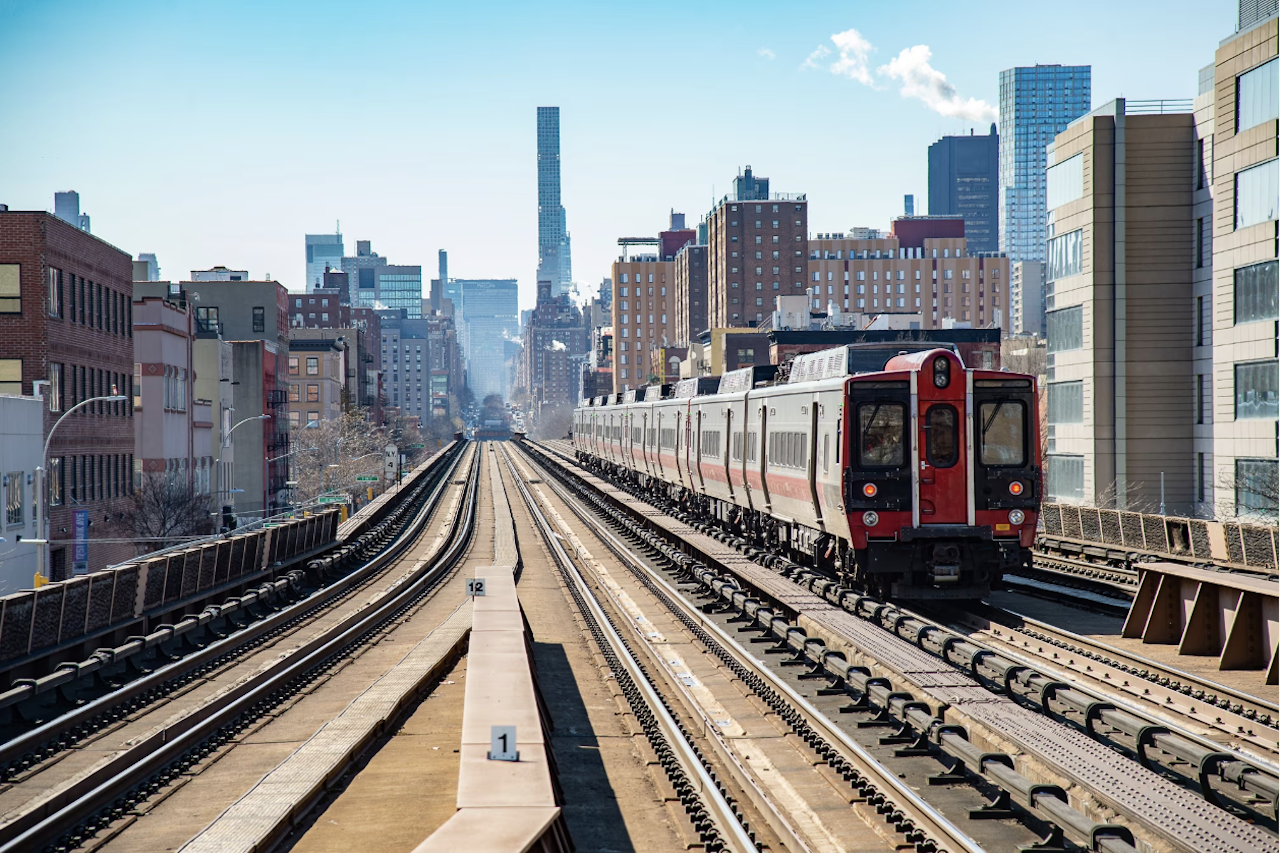
NYMTA photo
Construction work begins on Metro-North’s Park Avenue Viaduct Replacement Project. Also, the Metropolitan Transportation Commission (MTC) completes regional funding for the Valley Transportation Authority’s (VTA) Silicon Valley Bay Area Rapid Transit (BART) Extension; the Detroit People Mover honors breast cancer survivors; LA Metro releases its 2023 Customer Experience Plan; TriMet begins construction at the Hollywood Transit Center; and the San Diego Metropolitan Transit System (MTS) approves a new transit-oriented housing development in La Mesa.
NYMTA/Metro-North
The New York Metropolitan Transportation Authority (MTA) on Oct. 26 announced that reconstruction work on Metro-North Railroad’s 130-year-old Park Avenue Viaduct in East Harlem has begun as areas underneath have been cleared for the project’s new foundations and columns that will support the new structure.
The Park Avenue Viaduct is an elevated steel structure that carries four Metro-North tracks along Park Avenue between East 110th Street and the Harlem River Lift Bridge. Metro-North trains traveling along the Harlem, Hudson and New Haven lines utilize the Park Avenue Viaduct to access Harlem-125th Street Station and Grand Central Terminal, totaling 98% of Metro-North trains.
The $590 million for the first phase of the Park Avenue Viaduct Replacement project will replace major segments of the elevated steel structure, nearly half of which was first built in 1893, to ensure it remains in a state of good repair; $500.9 million is federally funded.
Phase 1 work will include replacing existing structures, tracks, power, communications, and signal system from East 115th Street to East 123rd Street. Phase 1 construction will continue through 2026. Work currently is underway for substructure construction, focusing on the viaduct’s foundations and columns.
According to MTA, the project seeks to minimize impacts on the surrounding community by “strategically phasing the work, which also results in limited impacts to Metro-North train schedules.” In line with community feedback and in conjunction with the State Historic Preservation Office (SHPO), MTA says project design elements will include: a more welcoming lighter color structure, improved lighting, and increased pedestrian safety under the viaduct. By utilizing modern design standards and materials, the new structure is expected to reduce local noise and vibration levels as compared to existing levels. MTA Arts & Design is also coordinating a permanent art installation for 116th Street as part of the project. The project builds on more than $24 million of recent MTA investment in the Harlem-125th Street Station area, including lighting improvements, station work performed under the enhanced station initiative, customer service kiosk enhancements, stairwell replacement, and the painting of other sections of the viaduct.
As a part of the project, MTA has entered into a Project Labor Agreement (PLA) with the Building and Construction Trades Council of Greater New York and Vicinity (BCTC), its participating affiliated local unions, and their members. The agreement—representing the first PLA since the creation of MTA C&D in 2019—”is a commitment to working with union partners to improve labor efficiency and reduce costs on capital projects without compromising worker pay or safety,” MTA said. Cost savings are expected through improved work rules —such as unified holidays, 40-hour work weeks, flexible start times, and maximum use of apprenticeships—as well as enabling health insurance reforms that provide better treatment of workplace injuries and reduce lost time.
To educate the community on the project, MTA says the project team has conducted dozens of local pop-up information sessions in the East Harlem community and partnered with East Harlem schools to bring hours of STEM programming to over 500 students. As further commitment to continued two-way dialogue with the community, the project has employed a dedicated, full-time bilingual (English/Spanish) Construction Community Liaison who is available to answer questions and provide updates on project progress.
Project benefits, according to MTA, include:
- Maintaining public safety, making the viaduct more resilient, and ensuring continued Metro-North service for the 98% of Metro-North trains reliant on the viaduct for service.
- Reducing local noise and vibration levels through utilization of modern design standards and materials.
- Increasing pedestrian safety under the viaduct.
- Installation of permanent art at 116th Street.
Project Timeline:
- Q3 2023: Construction activity underneath the viaduct (substructure construction) begins.
- Q2 2024: Construction on the viaduct (superstructure construction) begins.
- 2026: Phase 1 concludes.
“The Park Avenue Viaduct is a critical link between Grand Central Terminal and every city, town and village that Metro-North Railroad services in the Bronx, north of New York City and in Connecticut,” said MTA Chair and CEO Janno Lieber. “Brilliant engineers and builders left a structure that has lasted for 130 years, but we need to overhaul it to keep service safe for the 21st century.”
“Every train Metro-North operates east of the Hudson River—750 passenger trains a day—either travels over the Park Avenue Viaduct or connects with a train that does,” said Metro-North President Catherine Rinaldi. “So, to call this 130-year-old infrastructure ‘critical’ seems like an understatement. Metro-North is extremely appreciative that MTA Construction & Development has prioritized replacement of the viaduct in a timely way that will allow the railroad to continue operations without significant disruption to schedules.”
MTC/VTA
MTC on Oct. 25 voted to allocate the $375 million for Phase II of VTA’s BART Silicon Valley Extension (BSVII), bringing regional BART service one step closer to downtown San Jose and Santa Clara.
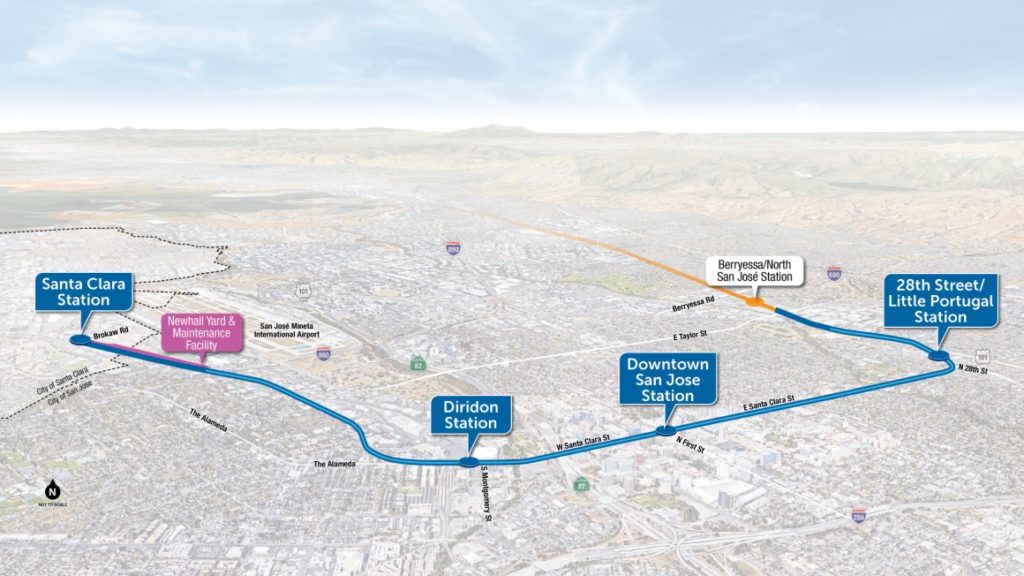
For VTA’s BART Silicon Valley Program, financial support comes in the form of local tax measures, which Santa Clara County residents have passed repeatedly over the past two decades, according to the agency.
Funding for the Program began in 2000 with the passing of Measure A, a 30-year half-cent (0.005%) sales tax devoted to specific public transit capital improvement projects and operations. Among the many projects identified for 2000 Measure A funds, approximately $1.2 billion was used to fund the construction of VTA’s BART Phase I Extension (which opened in 2020), and additional funding has been earmarked to fund construction of VTA’s BART Phase II Extension.
In 2008, Santa Clara County voters doubled down on their commitment to funding VTA’s BART Silicon Valley Program by passing the 2008 Measure B, eighth of a cent (0.00125%) sales tax dedicated to funding operations of the Program.
Then, in 2016, 71% of voters supported additional funding for VTA’s BSVII Project as well as highway, expressway and other transit projects with the passing of the 2016 Measure B, a second 30-year half-cent (0.005%) sales tax.
In total, Santa Clara County local sales tax measures are funding an estimated $4.3 billion for construction of VTA’s BSVII Project.
In 2018, Bay Area residents approved Regional Measure 3 (RM3), which is anticipated to raise $4.45 billion to finance highway and transit improvements. This funding includes the purchase of new BART cars, extending Caltrain to downtown San Francisco, and $375 million towards the construction of VTA’s BSVII Project.
Also in 2018, the Transit and Intercity Rail Capital Program (TIRCP) awarded VTA $750 million to fund the BSVII Project. An additional $375 million was awarded to VTA for the BSVII Project following a state surplus, increasing state funding to $1.125 billion.
In 2023, the State provided additional funds for MTC to allocate towards transportation infrastructure and operations in the Bay Area. On Oct. 25, 2023, MTC committed an additional $375 million to fund the construction of VTA’s BSVII Project, bringing the total state funding to $1.5 billion.
VTA says it anticipates receiving a full funding grant agreement (a commitment to fund the project known as the FFGA) for approximately $6 billion, or approximately 50% of the total cost of VTA’s BSVII Project, in late 2024. With that, VTA will have secured the last remaining piece of the funding pie.
Detroit People Mover
The Detroit People Mover will use its elevated route to display the Pink Fund’s campaign, “Eyes Up Here” as its first-ever public service ad message. Reproduced on a People Mover train, the visuals highlight women who are breast cancer survivors, including those who received financial support from Pink Fund.
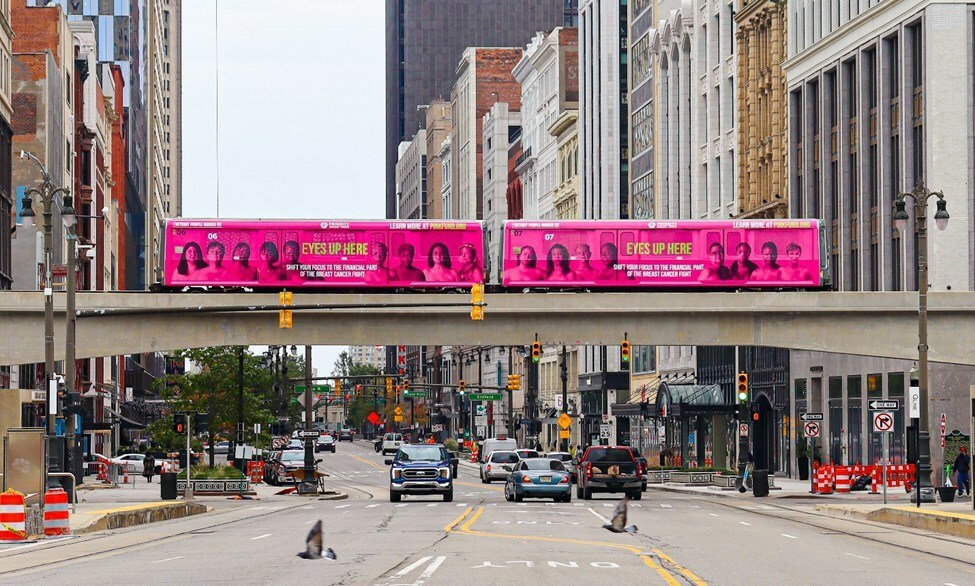
Several of the survivors were photographed with their portraits on the train during the 11 a.m. kick-off on Oct. 12. The People Mover partnered with Priority Waste to offer free fares all day to help drive interest regarding assistance for critical life expenses, reduced incomes or lost wages.
The national “Eyes Up Here” campaign, which launched in spring 2023, includes striking and provocative imagery of real breast cancer patients and survivors who have received assistance from Pink Fund and experienced the financial burden of this disease firsthand.
“Pink Fund is proud to feature these brave women whose stories educate about the other part of the breast cancer fight,” Pink Fund CEO and Co-Founder Molly MacDonald. “We’re grateful to Priority for their donation of this wrap and supporting our efforts to bring awareness to the side consequence known as financial toxicity, which impacts active treatment adherence and survivorship outcomes, is a real and immediate challenge.”
“Supporting people with the best in service is one of our core goals,” said Priority Waste CEO Todd Stamper. “We’re inspired by the opportunity to highlight the work of Pink Fund, which is a financial bridge supporting patients when their everyday lives are affected by breast cancer.”
LA Metro
LA Metro has released its third Customer Experience Plan, which highlights a mix of projects, including everything from expanding customer research, improving communication efforts, advancing important capital improvements, and adopting operational changes.
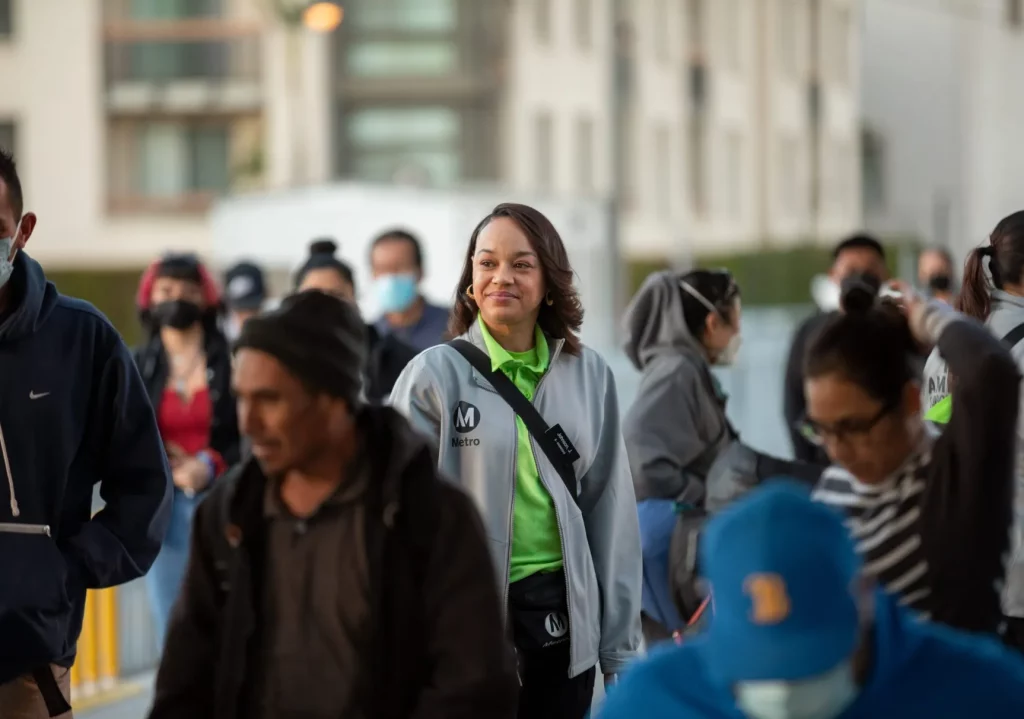
In 2018, the Metro Board asked the agency to create a comprehensive customer experience plan to “record, share, and address the frustrations and concerns” LA Metro riders have mentioned in surveys, community meetings, customer care centers, and social media.
The plan’s purpose, LA Metro says, was to take an honest look at these pain points, and to outline the specific actions the agency is taking to respond to customer concerns.
According to LA Metro, some projects in the 2023 plan (download below) are carried over from the 2020 and 2022 plans and others are brand new.
A few projects included in the 2023 CX Plan are:
- Restoring rail frequency to pre-COVID service levels.
- Improving Spanish language communications
- Continuing the camera bus lane enforcement pilot.
- Improving lighting and camera visibility on-board and in stations, as outlined in the Gender Action Plan (GAP).
- Implementing the Bus Stop Improvements Program.
- Making it easier to enroll in reduced fare programs.
- Improving wayfinding and updating signage at the largest and busiest stations.
- Increasing staffing to cover the maintenance HelpDesk 24/7.
- Improving escalator and elevator infrastructure.
- Improving operators’ safety through an improved incident reporting system, bus riding teams, defensive shields, and more.
LA Metro will be highlighting the progress of many of these projects throughout the year on The Source, on the agency’s new Customer Experience Hub website, across social media channels and in board meeting updates.
TriMet
TriMet announced Oct. 26 that construction has begun on a series of projects at the Hollywood/NE 42nd Ave. Transit Center in Northeast Portland that will “transform the transit center into affordable homes, bustling retail and community gathering spaces—all just feet from TriMet trains and buses.”
According to TriMet, in the coming years, what had been nearly 35,000 square feet of underutilized land will become the site of hollywoodHUB, a mixed-use building and community space, with some 224 permanently affordable apartments. The former dead-end portion of Northeast 42nd Avenue will become a new public walkway, featuring a redesigned connection to the Hollywood MAX station.
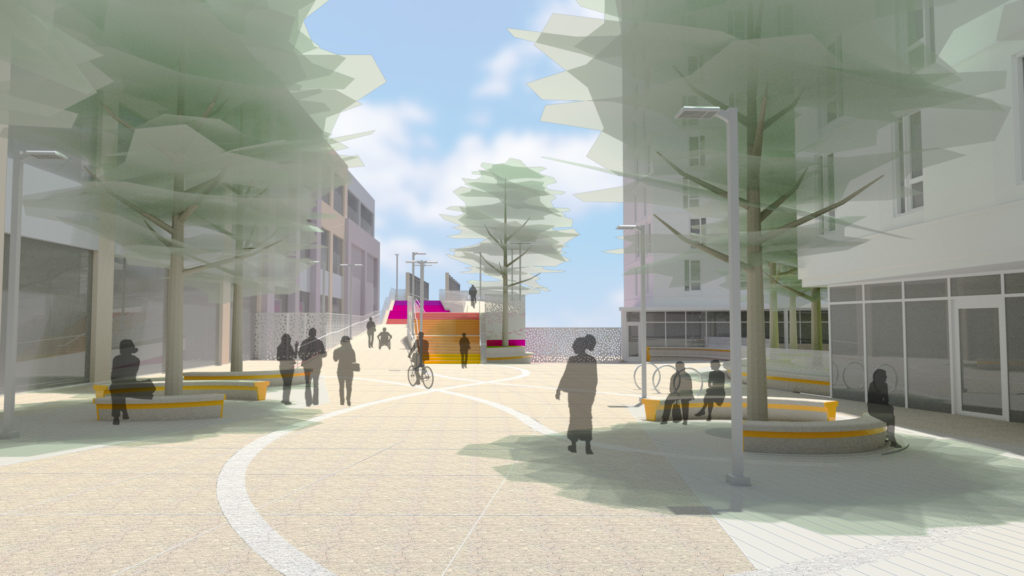
The project, TriMet says, represents an opportunity to fully realize the potential of an underutilized site. The Hollywood Transit Center opened in 1986 as part of the original 15-mile MAX line between Gresham and Downtown Portland. Changes over the past 37 years, including the city’s need for more affordable housing, spurred a closer look at the site as a new home for transit-oriented development (TOD) and modernized transit facilities.
To make way for the hollywoodHUB development project—a partnership between TriMet, developer BRIDGE Housing and resident services provider Hacienda CDC—TriMet must first demolish the existing ramp and stairs. A temporary, accessible structure will be installed to maintain access to and from the MAX station before TriMet creates a new, permanent ramp later in the construction.
Funding for the affordable housing element comes from many sources, reflecting the building’s size and its large number of units. Most notably, Portland Housing Bureau and Metro pooled resources to provide $31.95 million of affordable housing bond funding, sourced from the Portland Housing Bureau’s 2016 and Metro’s 2018 bond programs. With the combined resources of both bond programs supporting it, hollywoodHUB has received the largest funding award ever issued for an affordable housing project in Portland, an indication of the scale and impact of this project and the urgent need for affordable housing across the region.
On Thursday, Oct. 26, 2023, TriMet and partners took part in an official groundbreaking to begin TriMet’s ramp demolition and construction work. That will be followed, in the summer of 2024, by the first phases of constructing the hollywoodHUB development.
Once completed in 2026, TriMet says the project will serve as another example of TOD in action. Such projects maximize density while creating walkable neighborhoods near transit, relieving congestion, increasing the supply of affordable housing and community resources. “TriMet is not a developer, but we work with local partners or third parties to create better purposes for our underutilized properties, such as the Hollywood/NE 42nd Ave Transit Center,” the agency said.
Other recent examples include the new East County Library, under construction on the old site of TriMet’s Gresham City Hall Park & Ride, and the Fuller Station Apartments. Completed and opened for residents at the end of 2021, the Fuller Station development features 100 apartments for families and individuals who earn between 30% and 60% of the area median income.
More information is available here.
MTS
The MTS Board of Directors on Oct. 19 unanimously approved a new transit-oriented housing development at the Spring Street Transit Center in La Mesa.
The housing development, the agency says, is part of MTS’s growing effort to repurpose its park and ride lots into affordable housing solutions across San Diego County. The development will span 2.2 acres and feature 147 affordable housing units (30-60% of Area Median Income). Construction is anticipated to begin in February 2025 and take approximately two years.
The development at Spring Street will be constructed in partnership with Affirmed Housing, a leading provider of affordable housing throughout the state of California.
“MTS is excited to once again partner with Affirmed Housing to bring more relief to the region’s affordable housing crisis,” said MTS Board Chair and San Diego City Councilmember, District 3, Stephen Whitburn. “With the approval of the Spring Street development today, MTS will have nearly 3,000 residential units completed or in the planning process at our transit centers, and we aren’t slowing down. MTS staff and the Board are committed to maximizing our surplus land for the benefit of the community, and greater transit access for all.”
The Spring Street Transit Oriented Development is expected to be completed by 2027. Other projects currently on MTS property or in the works are:
Completed:
- Grossmont Transit Center (527 units)
- Morena/Linda Vista Station (185 units)
- 62nd and Encanto Street (67 units)
- Grantville Transit Center, Union Grantville (250 units)
Under Development:
- Grantville Transit Center, Shoreline (126 units)
- Rancho Bernardo Transit Center (100 estimated units)
- Palm Avenue (500 estimated units)
- El Cajon Transit Center (300 estimated units)
- E Street Transit Center (806 estimated units)
- Beyer Boulevard Transit Center (100 estimated units)
A full inventory of properties available or under development can be accessed here.



